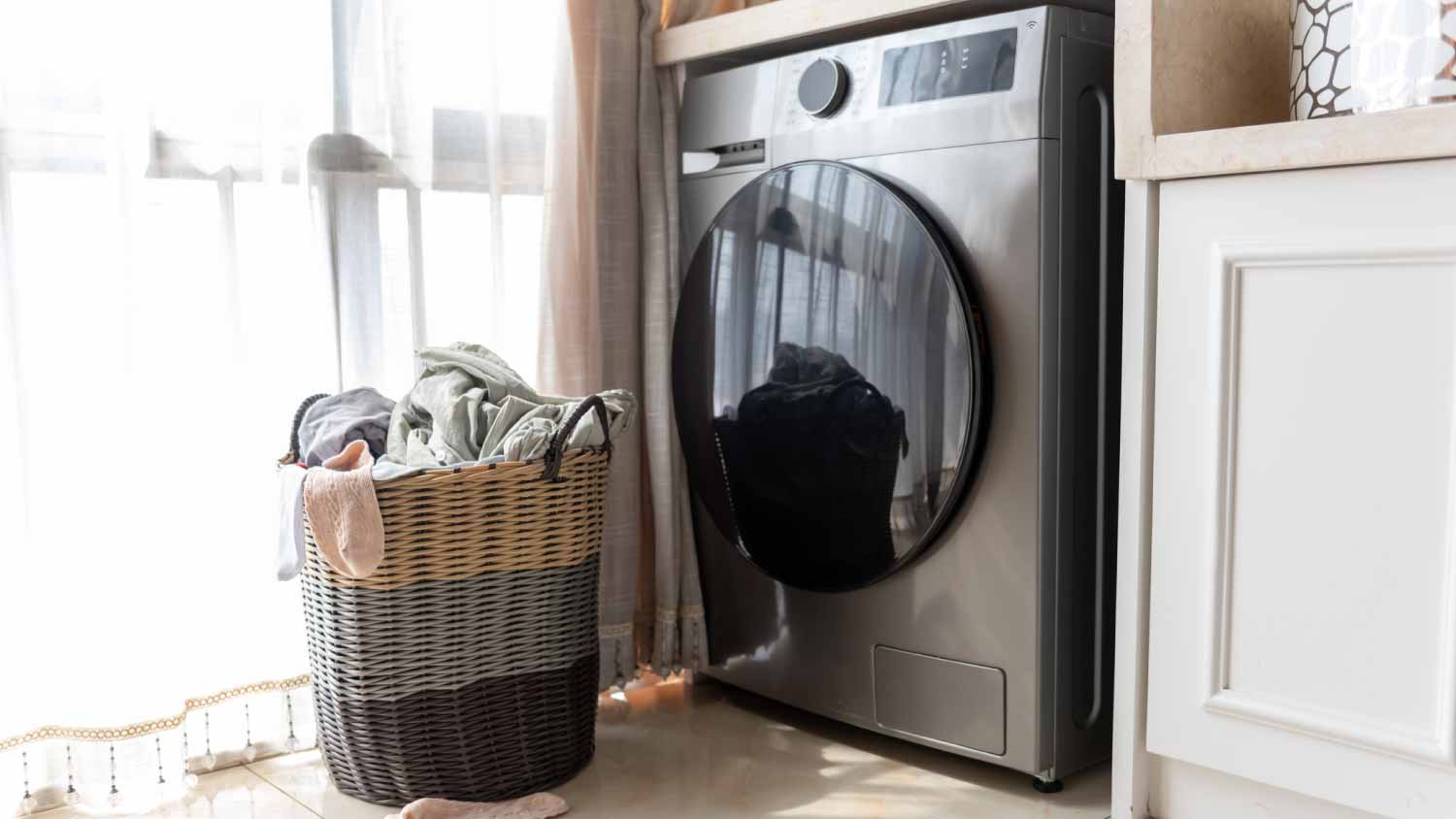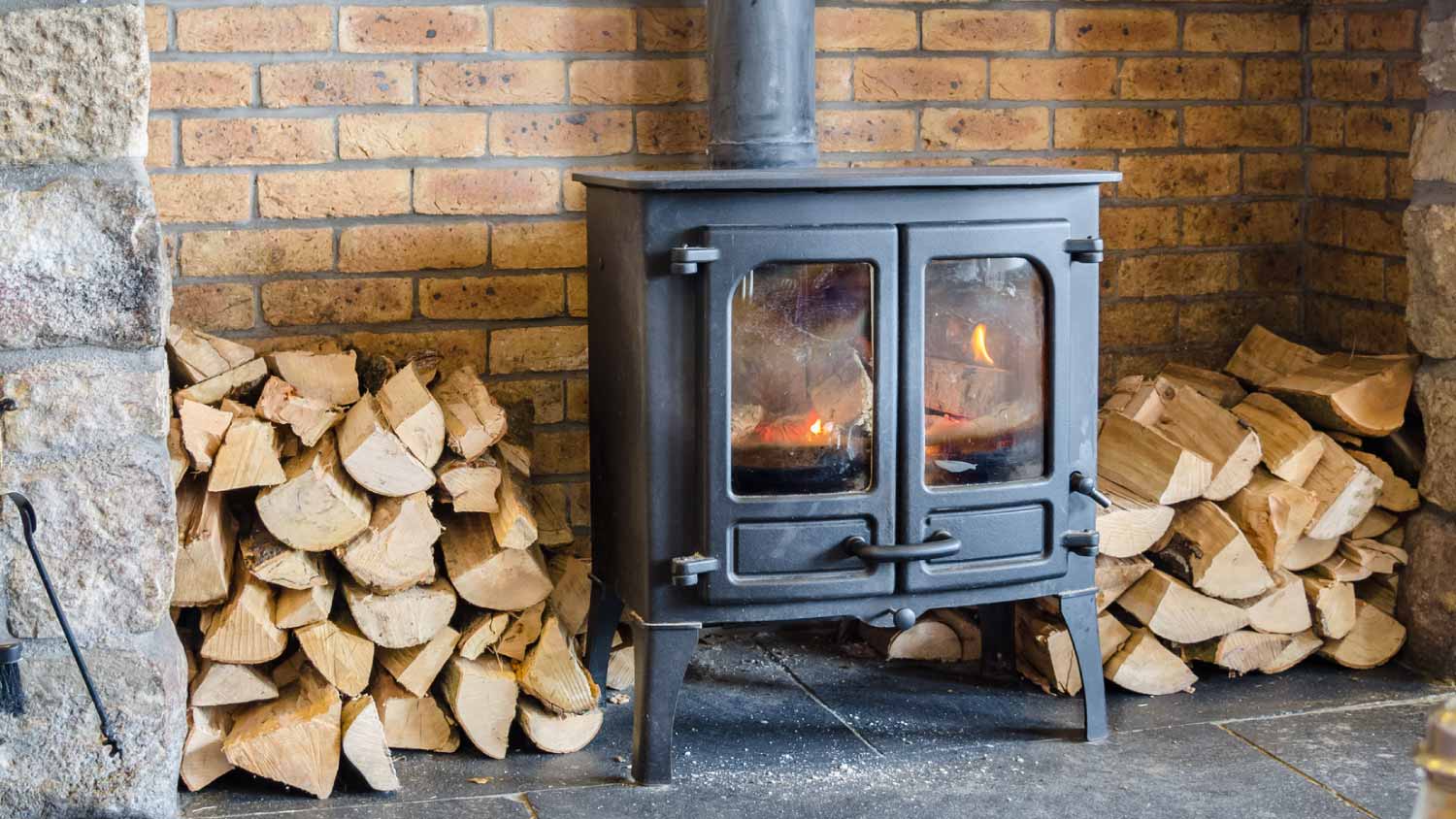From Damp Clothes to Strange Odors: Troubleshoot Washer and Dryer Problems Like a Pro
Temperamental washers and dryers shouldn't keep you from wearing your favorite jeans tonight


You're rushing out the door to work with coffee and bagel in hand, but your office cardigan is still damp in the dryer after a full two cycles. Of all the appliances in our home, a faulty washer or dryer can really grind your day to a halt. Here are the most commonly encountered issues with washer and dryer parts and how to get to the bottom of the problem in little time.
Common Washing Machine Problems
The life span of newer washers and dryers is just not as long as it used to be—only about five years. But if you keep your washer well maintained and don't ignore the red flags, you can extend both your machine and your dollar. Here are some of the most common headaches caused by a struggling washing machine.
1. Clothing Is Soaking Wet
Poor drainage or a faulty spin cycle can lead to unwashed clothing, sopping wet sweaters, or even water pouring out onto your feet when you open the door.
Some of the most common problems include:
Broken or disconnected hose
Worn hose washer
Clogged drainage hose
Broken washing motor, belt, bearings, or clutch
Begin by unplugging your machine and checking if the drainage hose on the back of your machine is worn, broken, or clogged with hair, pet fur, or that scrunchie you've been missing.
Next, check if the washer properly spins when turned on. If it doesn't spin or you hear an abnormal amount of sloshing water, you may need a new clutch for about $245 with the help of a pro. Otherwise, check out the belt, bearings, or motor itself with the help of a professional eye.
A few warning signs that something is wrong with your system include a constant gurgling, slow-flushing toilets, bad odors, flooding in the yard, and a washing machine that's not draining properly (your clothes are still soaking wet after the spin cycle). Reach out to a pro if you think something may be wrong.
2. You Come Across Funky Smells
Your clothing consistently smells like a wet dog, and yet, you do not have a dog. Bad smells in your washing machine could be an issue with a mold or mildew buildup.
One main culprit is using too much detergent day in and day out. Soap residue can accumulate in the dispenser, the drum, and around the rubber seal.
Wash your washing machine—yes, we know that sounds redundant—at least once a month. Start by running a hot cycle with 2 cups of white vinegar in the dispenser on hot. You can also wipe down the inside of the machine and around the rubber seal.
3. The Washer Won’t Turn On at All
You're down to your last pair of clean-ish leggings, and the washer won't turn on. Try not to panic; this is often an easy fix. Start by checking the power to both the machine and to that part of your house in your breaker box.
Lastly, you may have a broken washer switch or door latch. A new washer switch costs about $140 to $190 with the help of a contractor, while the latch should run between $120 and $130.
4. You Hear Sounds and See Shaking
If squeaking, grinding, and thumping noises are driving you bonkers, it's worth checking it out to avoid costly problems.
An unbalanced washer is the most common offender. Make sure you haven't overloaded your washer or—in the case of a top-loading machine—put too much on one side.
Next, check the adjustable feet on the front of your washer. Over time, these can become unbalanced with too much shaking, especially if the machine shifts on the floor. Adjust each side until you can't easily shake the machine yourself.
Lastly, you may have a broken drum bearing, which can cost $150 to $185 for replacement.
Common Dryer Problems

Avoid a last-minute improvised clothesline by keeping your dryer up to date. Everything from a dirty lint trap to a broken drum belt can leave your clothing damp and wrinkled. Performing dryer maintenance, like sanitizing your dryer, is important too.
1. Clothing Doesn't Dry
You had one job, dryer. When your clothing finishes the cycle and it’s hot by not dry, you could have a broken heating element. In this case, it's best to call a professional for between $170 to $280 to handle this major element.
Did the problem develop over time? You could also have a clogged ventilation system or even a clogged lint filter that's keeping air from flowing freely. Check these elements if your heating element looks healthy.
2. Your Dryer Squeaks and Grinds
If the motor of your dryer is about to go, it will tell you with jarring sounds. Keep your ear out for possible:
Worn out rollers and axles
Worn or broken drive belts
Dying motor
Replacing a dryer belt yourself is doable for around $10 and $20, but call in a pro if you're concerned about opening up the machine yourself. The motor is the heart of your machine, but replacing it is much cheaper than buying a new machine, coming in between $190 and $330.
3. You Have Power Without the Spin
The dryer turns on and gets warm, but doesn't spin. Unless you've set it to the "dry flat" setting, this is an issue.
In addition to possible motor or belt issues listed just above, it could be a broken idler pulley. These two pieces work together to spin the drum. The idler pulley keeps the drum belt taut for a fast spin. You may be able to purchase a new belt and pulley in one kit for between $10 and $20.
4. Your Dryer Won't Turn On
Just like the washer, always start by checking the power source. Look at the outlet, the outlet's reset button, and the fuse box that feeds into that part of your home.
If all looks good, you could have a burned-out fuse in your machine itself. Dryers also include a thermal fuse—a safety mechanism that shuts your machine down when it overheats. If this fuse burned out in the process, replace it yourself for $5 to $10 or $80 to $130 with a pro.
Identifying the problem with your washer or dryer can be half the battle. Call in a washing machine or dryer repair team for the quickest diagnosis.





- Appliance Repair Companies
- Washing Machine Repair
- Dryer Repair
- Refrigerator Repair
- Dishwasher Repair
- Oven Repair
- Wood & Pellet Stove Repair
- Freezer Repair Services
- Wood Stove Services
- Gas Stove Repair
- Emergency Appliance Repair Companies
- Ice Maker Repair
- Gas Appliance Repair
- GE Appliance Repair
- GE Refrigerator Repair
- GE Dryer Repair
- GE Dishwasher Repair
- GE Washing Machine Repair
- Samsung Appliance Repair
- Samsung Refrigerator Repair
- Samsung Dryer Repair
- Samsung Washer Repair
- Samsung Dishwasher Repair
- Samsung Oven Repair
- Whirlpool Repair
- Whirlpool Refrigerator Repair
- Whirlpool Washer Repair
- Whirlpool Dryer Repair
- Whirlpool Oven Repair
- Maytag Appliance Repair
- Maytag Refrigerator Repair
- Maytag Washer Repair
- Maytag Dryer Repair
- Maytag Dishwasher Repair
- Kitchenaid Appliance Repair
- Kitchenaid Oven Repair
- Kitchenaid Refrigerator Repair
- Kenmore Appliance Repair
- Kenmore Dishwasher Repair
- Kenmore Washer Repair
- Kenmore Dryer Repair
- LG Refrigerator Repair
- Bosch Appliance Repair
- Kenmore Refrigerator Repair
- LG Appliance Repair Services
- GE Microwave Repair
- Electrolux Appliance Repair
- Electrolux Washer Repair
- Kitchenaid Dishwasher Repair Services
- Wood Stove Inspection
- Dishwasher Installation
- Trash Compactor Repair
- Why Your Dryer Won't Start and How to Fix It
- Parts of a Dryer: What They Are and How They Work
- Why Your Washing Machine Is Not Spinning and Potential Fixes
- What’s Causing Your Washing Machine Burning Smell? 5 Common Culprits and Solutions
- Who Do I Hire to Relocate a Washer and Dryer?
- Here Are All the Parts of a Washing Machine—and What Each One Does
- 11 Tips for Maintaining a Front-Load Washing Machine
- How Long Do Washing Machines Last? Here’s the Average Lifespan
- Top 6 Reasons Why Your Washing Machine Is Leaking Water
- How to Dispose of an Old Washer and Dryer Properly











